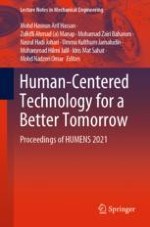
2022 | OriginalPaper | Buchkapitel
Heart Rate Variability (HRV) as a Physiological Marker of Stress Among Electronics Assembly Line Workers
verfasst von : Kamarulzaman Mahmad Khairai, Muhammad Nubli Abdul Wahab, Auditya Purwandini Sutarto
Erschienen in: Human-Centered Technology for a Better Tomorrow
Verlag: Springer Singapore
Aktivieren Sie unsere intelligente Suche, um passende Fachinhalte oder Patente zu finden.
Wählen Sie Textabschnitte aus um mit Künstlicher Intelligenz passenden Patente zu finden. powered by
Markieren Sie Textabschnitte, um KI-gestützt weitere passende Inhalte zu finden. powered by